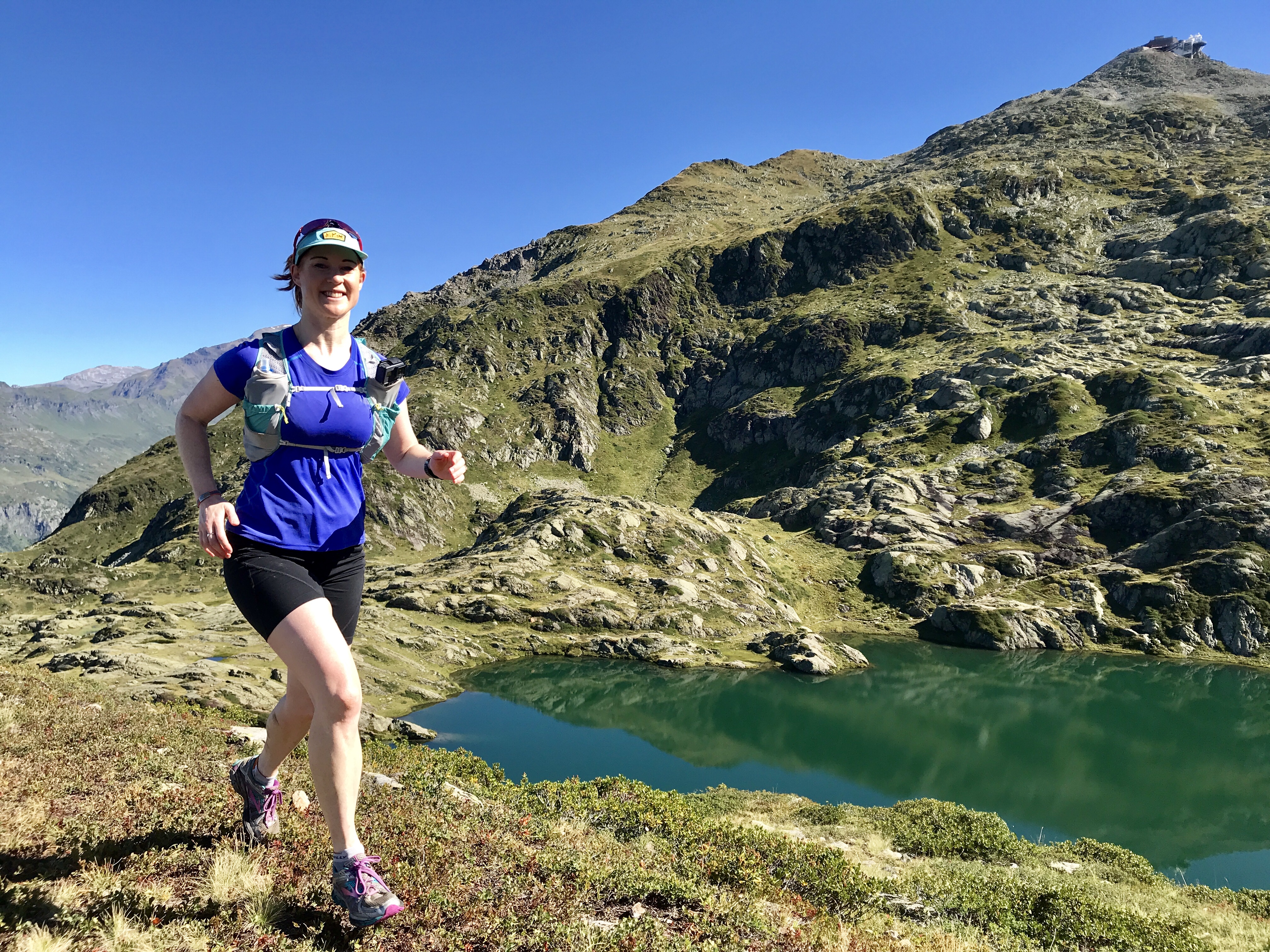Split-toe sock technology: will it really revolutionize your run?
Can the new Sidas T-Free Run and T-Free Trail split-toe socks deliver the comfort and performance enhancement they promise? We put them through their paces

They make your feet look like trotters or even cloven hooves, but with split-toe socks the devil may just be in the detail. The Sidas T-Free Run and T-Free Trail split-toe socks are the brainchild of elite ultra runner Jon Albon, and are described as the first ever technical running socks to house the big toe in its own separate compartment. But what good does that do?
“Everybody has been talking about wide-fit shoes and how they allow your toes to splay more naturally,” says Albon, “but what’s the point of a wider toe box if your sock pinches the toes in anyway? I thought, ‘What I want is a sock that will let my toes splay.’ These socks do exist, mainly for wearing socks with flip flops – and there is a movement called #Freethetoe – but the idea was to make some technical running socks with just the big toe split into its own pocket.”
This big-toe separation is designed to give the foot better comfort, stability, balance and propulsion. Sounds good doesn’t it? After extensive testing with the Sidas design team, Albon certainly thinks so: “I do think that once you’ve started using these socks it’s going to be difficult to go back to using normal ones again.”
The Sidas T-Free range is due out in March / April 2024 at the gulp-worthy price of $30 (€30, £28.50), but Advnture has managed to get a sneak preview pair of T-Free Trails and I’ve been training for ultras in them for a couple of months. Do they make a difference and are they worth forking out for? This is what I think…
Are split-toe socks comfy?
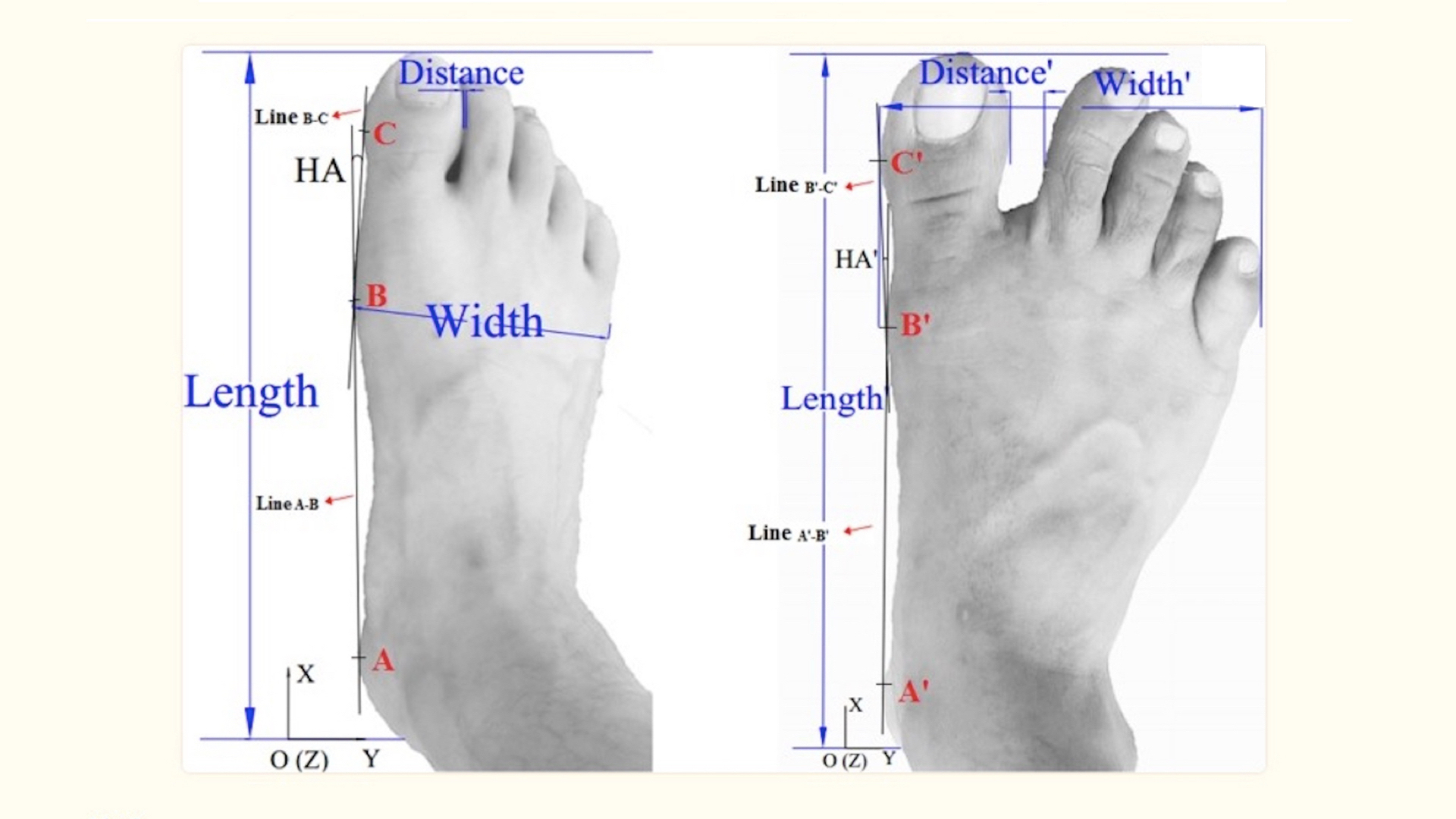
This split-toe design of the T-Free Trails is completely new for us. We’re all used to toe socks with fabric pouches for each toe, which guards against chafing and blisters, but this trotter design is completely different. I was skeptical about the comfort at first as the area between the big toe and the next toe doesn’t usually rub for me, so I was reluctant to introduce extra fabric into this area. But time and time again the big toe compartment has proved very comfortable on long and short trail runs in the (hilly, rocky and muddy if you know where to look) Leicestershire countryside.
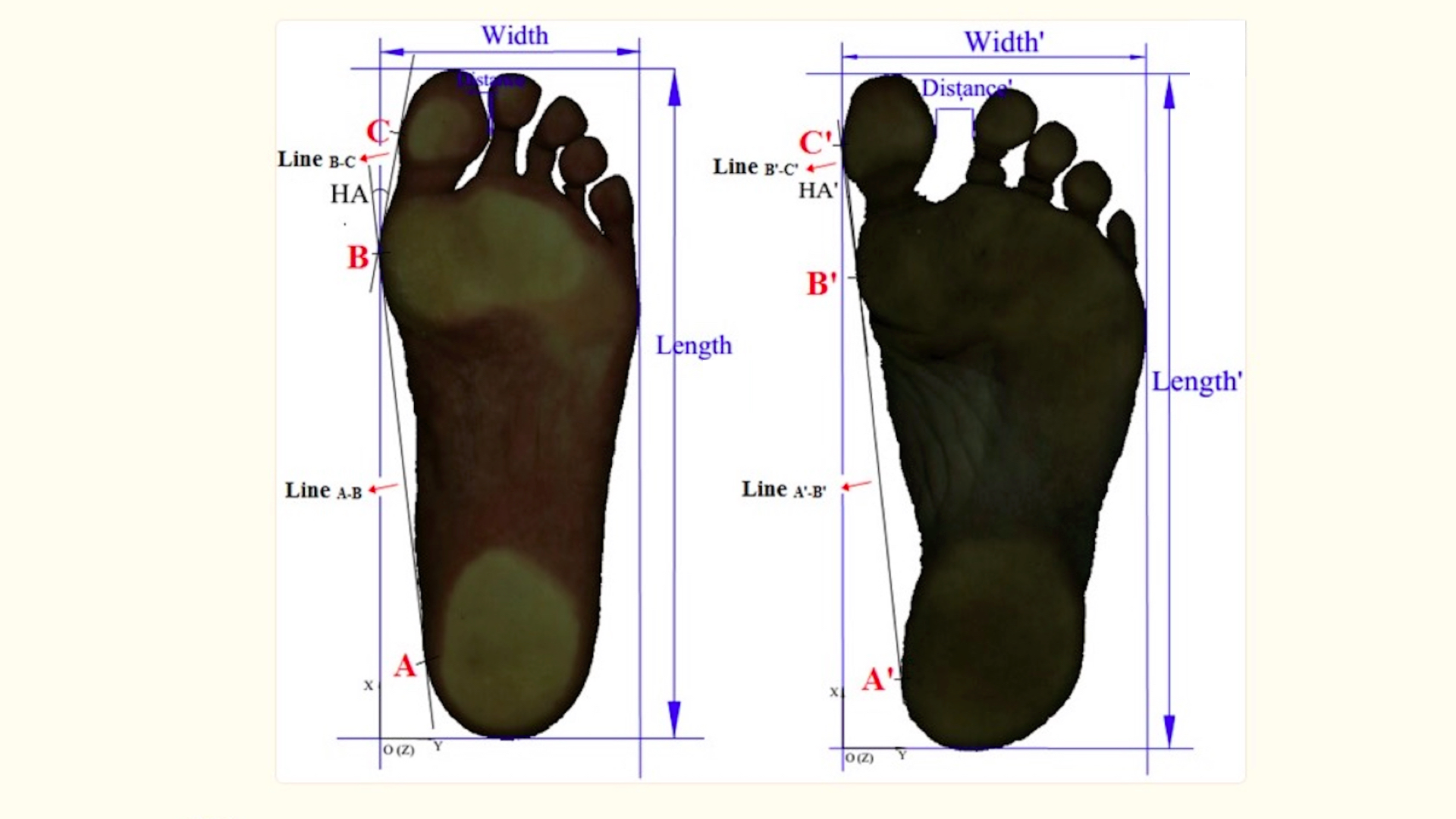
They’re easier to get on than toe-socks where you have to insert each digit individually into its own pocket, but take slightly longer to get on than regular socks. The only disadvantage we can think of here is if you have a much longer- or shorter-than-average big toe it may not fit into the compartment well.
My big toe is a little longer than the allotted length so I was worried the material between the digits would rub, but after about 100+ miles of training for ultras in this sock I haven’t experienced any chafing. So the answer to, “Are they comfy?” seems to be a resounding, “Yes!” for most feet.
All the latest inspiration, tips and guides to help you plan your next Advnture!
Do they improve balance and stability?
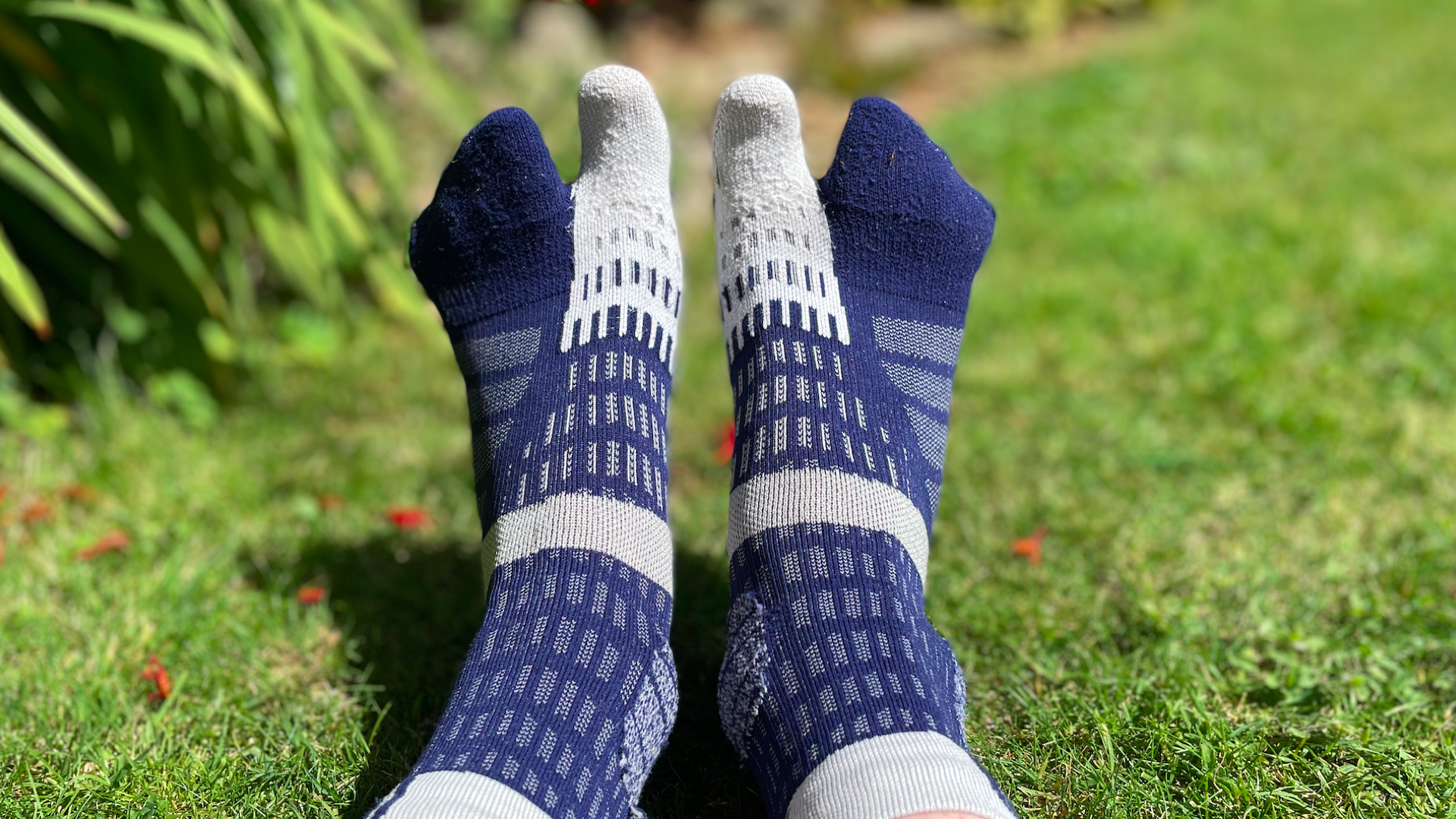
Again, I was skeptical at first but what I noticed here was that the separate compartment on the T-Free Trails immediately makes you more aware of the big toe working independently and separately to the rest of your toes. While my balance is pretty good to start with, surprisingly this new, increased feeling and agency around the big toe actually made me feel more aware of it, and therefore more stable, especially on the ankle-twisting, rutted and sun-baked mud in the Lincolnshire fields where I live. When you start to look into the science, this makes total sense.
If you’ve ever wobbled about on a yoga mat you’ll know that splaying the toes is a skill that most Westernized runners need to work on, whereas unshod, the human foot is a wider, upside-down triangle shape. The habitually shoe-shy foot is proven to have “more separation between the big toe and the rest of the toes,” say scientists published in Plus One journal. Years of shoe-wearing, however, gives most runners a big toe that points slightly inwards and smaller toes clamped close together, with the little toe sometimes even diving underneath the others to fit into narrow toe-boxed shoes and trainers.

So, which do you reckon should be better for balance while trail running? A foot in its wider, splayed-out, natural shape? Or one that’s been squeezed into submission? Exactly.
Have a look at your own foot now. Take a big toe and gently pull it slightly outwards so it makes more of a straight line with the first metatarsal, the ridge of bone that runs that runs up your foot. Mine sometimes makes a soft click when I do this, and instantly it feels like the foot is aligned better. I like that the split-toed T-Free Trail socks allow and encourage this foot splay for better balance and stability on the trails.
Do they really propel you forward?
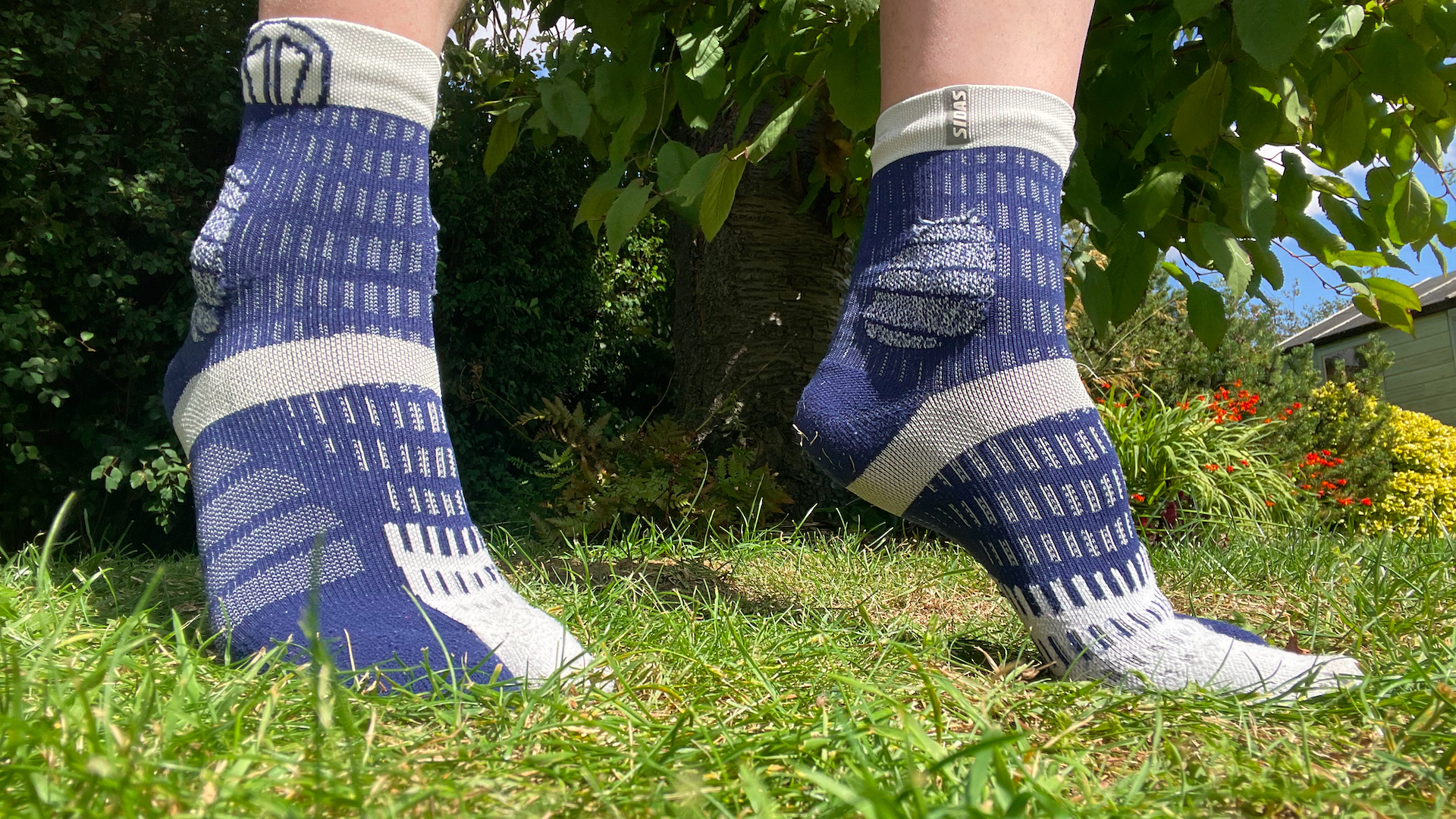
So this one had us chuckling to ourselves when Sidas first told us about the split-toed T-Free range. A sock propelling you forward? There’s no carbon plate, no bouncy EVA midsole and certainly no jet pack in this trotter-sock, so how on Earth will it help us fly along the trails? We thought this was utter baloney. However, the science is once again on the side of the split-toed sock.
According to scientists publishing their research in Footwear Science journal, “Current data suggests that footwear that fails to respect natural foot shape and function will ultimately alter the morphology and the biomechanical behavior of the foot.”
While we’ve often ranted about testing yet another trail running shoe that cramped our toes together with its pointy forefoot, we never considered that a snug-fitting regular sock would at worse compound the problem and at best ignore it. Until now. Wearing the T-Free Trails with wide-toe-box shoes really does allow your big toe to move more independently and comfortably, in alignment with the first metatarsal as mentioned above, which should therefore lead to better forward propulsion.
In all honesty, I found this aspect harder to notice than the balance and stability because I’m more ultra plodder than propeller. I think this aspect needs some faster running to test it out, so I’m happy to leave that to elite athlete and designer Jon Albon and the other pros!
Being more aware of the big toe is perhaps the first step, but I do also think it might take more than a split-toed sock combined with a wide-toe-box running shoe to coax that big toe out of its habitually squashed-in position. Actively working on splaying the toes should also form part of your squashed-foot rehab. It’s a great start, though.
Are they worth forking out for?

I must admit, £28.50 for a pair of socks did make me wince, as it’s twice the price of the technical running socks I’m used to testing. Sidas’s reasoning? The T-Free socks are made at a factory with high standards in Portugal with a high needle count, which means it has a lot of stitches, making it more durable, dense, better-fitting and higher quality. It has an in-and-out construction which means there are no loose threads except where there is extra cushioning for comfort at the ankle, under the heel and forefoot.
Both T-Frees also boast a wide band of grippy silicone yarn around the middle of the foot to stop the sock moving around in the shoe and a low seam at the toe so there are no blister-boosting bumps in that area. This, combined with Polygiene Stayfresh odor treatment and reflective ankle bands make for a sweet-smelling, safety-conscious and very durable sock that should stay comfortable for many years of trail and ultra running.
Sidas acknowledge that sustainability is a tricky balancing act but they’ve made the decision to use highly durable polyamide rather than less durable recycled materials on the premise that it’s more eco-friendly for the T-Free socks to last a long time.
Verdict
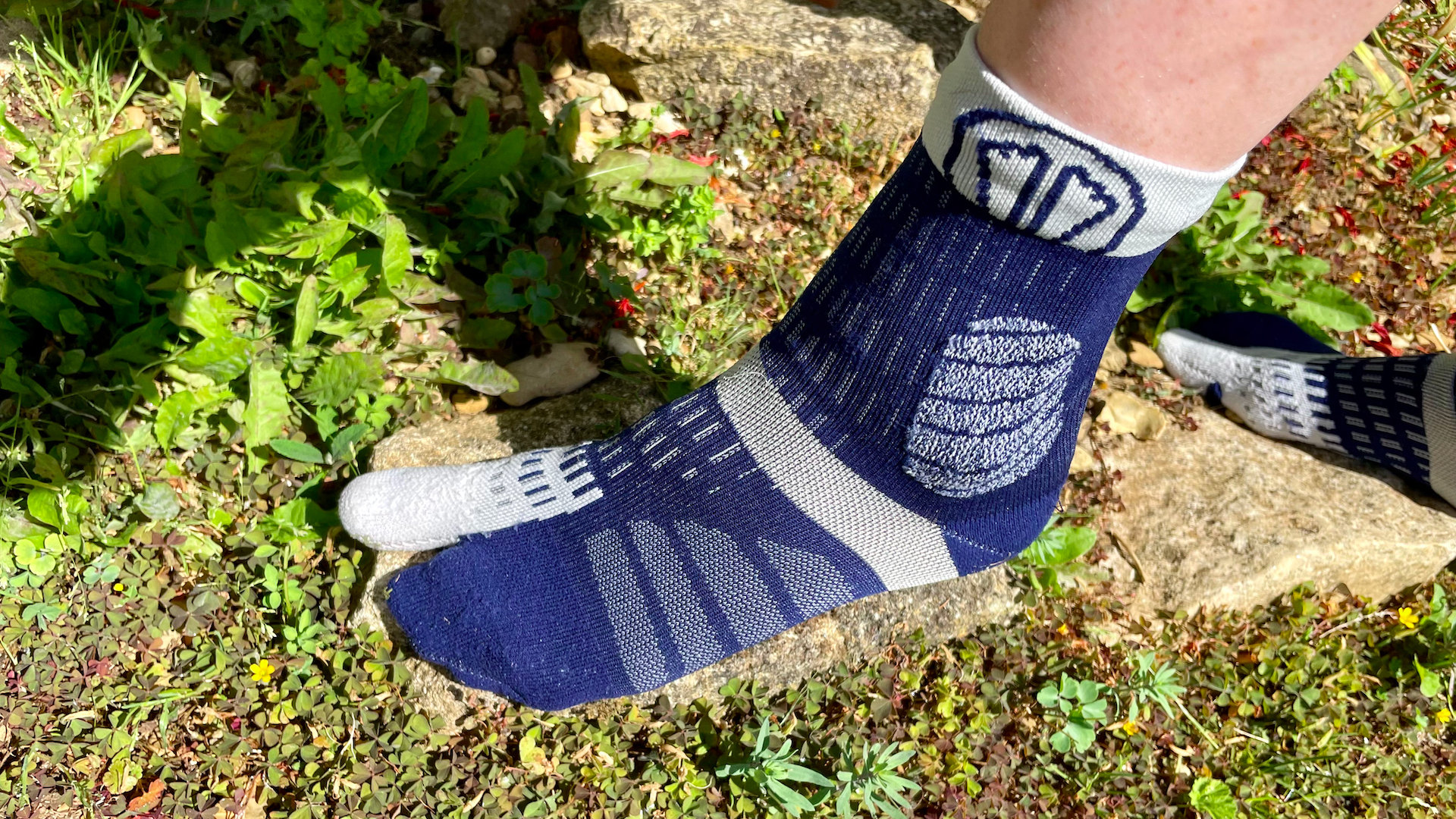
Will these socks help you run better? I was highly skeptical at first, but actually I think overall, yes they could. Especially if you’re interested in allowing your foot to splay and behave more naturally within a wider-toe-box shoe, the Sidas T-Frees will be the icing on your ultra running cake.
However if you don’t currently have any concerns about or problems with your feet or any injuries relating to your biomechanics, we don’t see any need to change from the socks you’re already wearing. Apart from curiosity… One for the birthday present list, maybe?
Will I continue to wear T-Free Trails for off-road and ultra running combined with efforts to encourage my toes to splay in a natural way? Definitely.
The Sidas T-Free range will be released in late spring 2024.
The co-founder and former editor of Trail Running magazine, Claire now runs the YouTube channel Wild Ginger Running, creating films about trail- and ultra-running advice, inspiration, races and gear reviews. An award-winning journalist, writing for outdoor and adventure sports magazines and websites, Claire's first book, The Ultimate Trail Running Handbook (5k to 50k), is out now. Her second, The Ultimate Ultra Running Handbook (50k to 100 miles), is out Autumn 2024. Claire also speaks and presents at events and races.
